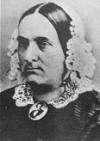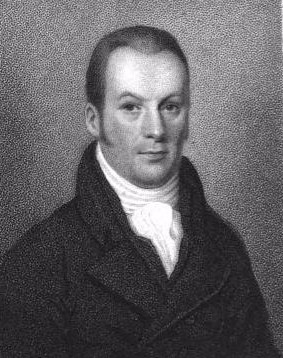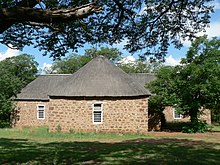
David Livingstone was a Scottish physician, Congregationalist, pioneer Christian missionary with the London Missionary Society, and an explorer in Africa. Livingstone was married to Mary Moffat Livingstone, from the prominent 18th-century Moffat missionary family. Livingstone came to have a mythic status that operated on a number of interconnected levels: Protestant missionary martyr, working-class "rags-to-riches" inspirational story, scientific investigator and explorer, imperial reformer, anti-slavery crusader, and advocate of British commercial and colonial expansion. As a result, Livingstone became one of the most popular British heroes of the late 19th-century Victorian era.

The Griquas are a subgroup of mixed-race heterogeneous formerly Xiri-speaking nations in South Africa with a unique origin in the early history of the Dutch Cape Colony. Like the Boers they migrated inland from the Cape and in the 19th century established several states in what is now South Africa and Namibia. The Griqua consider themselves as being South Africa’s first multiracial nation with people descended directly from Dutch settlers in the Cape, and local peoples.

Kuruman is a small town in the Northern Cape province of South Africa. It is known for its scenery and the Eye of Kuruman, a geological feature that brings water from deep underground. The abundance of water produces an unexpected swathe of green amidst the barren plains and is known as the "Oasis of the Kalahari". It was at first a mission station of the London Missionary Society founded by Robert Moffat in 1821. It was also the place where David Livingstone arrived for his first position as a missionary in 1841. The Kuruman River, which is dry except for flash floods after heavy rain, is named after the town.

Mary Mitchell Slessor was a Scottish Presbyterian missionary to Nigeria. Once in Nigeria, Slessor learned Efik, one of the numerous local languages, then began teaching. Because of her understanding of the native language and her bold personality Slessor gained the trust and acceptance of the locals and was able to spread Christianity while promoting women's rights and protecting native children. She is most famous for her role in helping to stop the common practice of infanticide of twins in Okoyong, an area of Cross River State, Nigeria.

Campbell is a small town situated on the edge of the Ghaap Plateau in the Northern Cape province of South Africa. It is located 48 km east of Griquatown on the N8 road. It was originally known as Knovel Valley and then Groote Fontein, but was renamed in honour of the Reverend John Campbell who visited the Cape Colony in 1813.

Griekwastad is a country town in South Africa. It is sometimes still called Griquatown, a name which is now considered historical. The town is on the N8 road in the Northern Cape Province of South Africa 168 kilometres (104 mi) by road west from the city of Kimberley. It was the first town to be established in the country north of the Orange River.

Robert Moffat was a Scottish Congregationalist missionary to Africa from 1817–1870.

The London Missionary Society was an interdenominational evangelical missionary society formed in England in 1795 at the instigation of Welsh Congregationalist minister Edward Williams. It was largely Reformed in outlook, with Congregational missions in Oceania, Africa, and the Americas, although there were also Presbyterians, Methodists, Baptists, and various other Protestants involved. It now forms part of the Council for World Mission.

François Coillard was a French missionary who worked for the Paris Evangelical Missionary Society in southern Africa.

Sechele I a Motswasele "Rra Mokonopi" (1812–1892), also known as Setshele, was the ruler of the Kwêna people of Botswana. He was converted to Christianity by David Livingstone and in his role as ruler served as a missionary among his own and other African peoples. According to Livingstone biographer Stephen Tomkins, Sechele was Livingstone's only African convert to Christianity, even though Livingstone himself came to regard Sechele as a "backslider". Sechele led a coalition of Batswana in the Battle of Dimawe in 1852.
Mary Ann Aldersey was the first Christian missionary woman to serve in China proper. She founded a school for girls in Ningbo, Zhejiang. Her pioneering the field of mission work for single women in China was the most remarkable outcome of her life.

William Anderson was an English Christian missionary who relocated to South Africa under the auspices of the London Missionary Society. He was one of the earliest missionaries in the region. Anderson was instrumental in the foundation of the South African town Griquatown.

John Smith Moffat (1835–1918) was a British missionary and imperial agent in southern Africa, the son of missionary Robert Moffat and Mary Moffat. He was the brother-in-law of missionary explorer David Livingstone. He is known for his various publications and essays detailing his journeys and experiences in Africa and the eastern Mediterranean.

Dr Johannes Theodorus van der Kemp was a military officer, doctor, and philosopher who became a missionary in South Africa.

The Asbestos Mountains is a range of hills in the Northern Cape province of South Africa, stretching south-southwest from Kuruman, where the range is known as the Kuruman Hills, to Prieska. It passes Boetsap, Danielskuil, Lime Acres, Douglas and Griekwastad. The range lies about 150 kilometres (93 mi) west of Kimberley and rises from the Ghaap Plateau.

John Campbell, was a Scottish missionary and traveller.
Isaac Hughes was a British Calvinist missionary and preacher. He was born to Welsh parents Edward and Mary Hughes in Manchester. His father came from Bontuchel in Denbighshire and his mother came from Brynsiencyn in Anglesey. After some time in Sheffield and Rotherham, he married Elizabeth Jones from Llangollen on 18 August 1823 and departed Britain a month later on 24 September on a ship from Gravesend, arriving in Cape Town, South Africa on 30 December. He initially worked as a blacksmith, reaching Kuruman in August 1824 and Griquatown in late 1827, also working in Lattakoo and Graham's Town. In 1839 he became a missionary. In 1845 he worked along the Vaal River and opened a new station in Backhouse, which later developed into the town Douglas. After his wife died he remarried a missionary's daughter, Anne Magdalena Vogelgezang, in 1850. He died on 23 June 1870 after a 47-year career.

Mary Livingstone was the wife of the Scottish Congregationalist missionary David Livingstone. She was a linguist, an experienced traveller, and managed the household affairs including missionary stations and infant school.

William Roby (1766–1830) was an English Congregational minister.
Mmanthatisi was the leader of the Tlokwa people during her son's minority from 1813 until 1824. She came to power as the regent for her son, Sekonyela, (Lentsha) following the death of her husband Kgosi Mokotjo. Mmanthatisi was known as a strong, brave and capable leader, both in times of peace and war. She was referred to by her followers as Mosanyane because of her slender body.



















